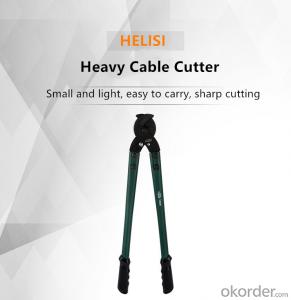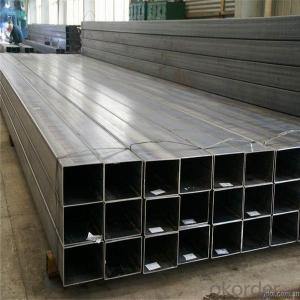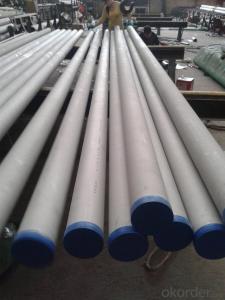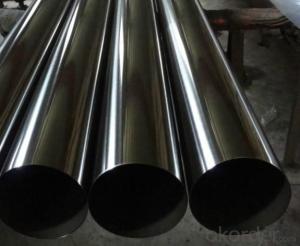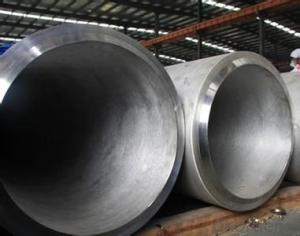Stainless Steel Tube Cutter
Stainless Steel Tube Cutter Related Searches
Best Paint For Stainless Steel Blanket Insulation For Steel Buildings Primer For Galvanized Steel Foam Filter For Stainless Steel H S Code For Stainless Steel Surface Grinding Wheels For Stainless Steel Surface Grinding Wheels For Hardened Steel Hole Saw For Stainless Steel Paint For Stainless Steel Stainless Steel For BbqHot Searches
Steel Mesh Panels For Sale Price For Stainless Steel Scrap Scrap Price For Stainless Steel Price For Stainless Steel Stainless Steel Tank For Sale Stainless Steel Sheets For Sale Cheap High Tea Sets For Sale Stainless Steel Tanks For Sale Stainless Steel For Sale High Density Fiberboard For Sale Solar Hot Water Collectors For Sale Scaffolding For Sale In Uae Scaffolding For Sale In Ireland Scaffolding For Sale In Houston Type Of Inverter For Solar Price Of Shipping Containers For Sale Types Of Inverter For Solar Stock Price For Aluminum Used Solar Inverter For Sale Steel Mesh Panels For SaleStainless Steel Tube Cutter Supplier & Manufacturer from China
Okorder.com is a professional Stainless Steel Tube Cutter supplier & manufacturer, offers integrated one-stop services including real-time quoting and online cargo tracking. We are funded by CNBM Group, a Fortune 500 enterprise and the largest Stainless Steel Tube Cutter firm in China.Hot Products
FAQ
- Cryogenic applications can indeed utilize stainless steel pipes. Stainless steel is widely recognized for its exceptional properties at low temperatures, including admirable strength, flexibility, and resistance against corrosion. These qualities render stainless steel pipes suitable for the transportation and storage of cryogenic fluids, like liquid nitrogen, oxygen, or argon. The high strength-to-weight ratio of stainless steel permits the construction of lightweight and durable cryogenic systems. Furthermore, stainless steel pipes can endure the extreme temperature gradients and thermal stresses commonly encountered in cryogenic applications. Nevertheless, it is crucial to select the appropriate grade of stainless steel specifically engineered for cryogenic service to ensure optimal performance and safety.
- Indeed, extreme weather conditions pose no challenge to stainless steel pipes, as they are highly suitable. Renowned for their remarkable corrosion resistance, stainless steel pipes are perfectly equipped to endure severe weather conditions such as extreme temperatures, heavy rainfall, and high levels of humidity. Moreover, the exceptional strength and durability of stainless steel pipes enable them to withstand the impact of powerful winds, storms, and other extreme weather phenomena. Furthermore, stainless steel remains unaffected by UV radiation, ensuring that it will not deteriorate or lose its color when exposed to intense sunlight. Consequently, stainless steel pipes prove to be a dependable and enduring choice for any application requiring resistance to extreme weather conditions.
- Yes, stainless steel pipes can be coated with other materials. Coating stainless steel pipes with other materials is a common practice in various industries. The purpose of coating stainless steel pipes is to enhance their performance, protect them from corrosion, improve their aesthetic appearance, or provide additional functionality. Common coating materials used on stainless steel pipes include epoxy, polyethylene, PVC, zinc, or ceramic coatings. These coatings can provide various benefits such as increased resistance to corrosion, improved abrasion resistance, better insulation properties, or reduced friction. Coating stainless steel pipes with other materials is often done through processes like electroplating, hot-dipping, or powder coating. The choice of coating material and process depends on the specific requirements and intended application of the stainless steel pipes.
- The typical wall thickness for stainless steel pipes can vary depending on the application and specific requirements. However, in general, stainless steel pipes are available in a wide range of wall thicknesses. For most standard applications, such as plumbing or industrial use, the typical wall thickness for stainless steel pipes can range from Schedule 5S (0.049 inches or 1.24 mm) to Schedule 80S (0.218 inches or 5.54 mm). It is important to note that for specialized applications or projects with specific requirements, the wall thickness can be customized accordingly. Overall, the selection of the appropriate wall thickness for stainless steel pipes should be based on factors such as the intended use, pressure requirements, and structural considerations.
- To join stainless steel pipes together, there are several methods available, depending on the specific requirements and application. 1. Welding: Welding is the most common and widely used method for joining stainless steel pipes. It involves the application of heat to melt the material, forming a strong and durable bond. Different welding techniques like TIG (Tungsten Inert Gas) or MIG (Metal Inert Gas) welding can be used for this purpose. 2. Compression fittings: Compression fittings are a popular choice for joining stainless steel pipes, especially in plumbing applications. These fittings consist of a compression nut and a ferrule that are tightened onto the pipe, creating a secure and leak-proof connection. 3. Flanges: Flanges are used when a more robust connection is required, such as in high-pressure or high-temperature applications. Two stainless steel pipes are joined together by bolting flanges at the ends, creating a tight and reliable connection. 4. Threaded connections: Stainless steel pipes can also be joined using threaded connections, where one end of the pipe is threaded and the other end is fitted with a threaded pipe fitting, such as a union or nipple. This method is commonly used for smaller diameter pipes or in situations where disassembly may be required. 5. Clamps and couplings: Clamps and couplings are used to join stainless steel pipes temporarily or in situations where frequent disassembly is required. These devices clamp around the pipes and are tightened using bolts or other mechanisms, creating a secure connection. It is important to consider the specific requirements, such as pressure, temperature, and corrosion resistance, when choosing the appropriate method to join stainless steel pipes. Consulting with a professional or referring to industry standards and guidelines can ensure a successful and reliable pipe connection.
- To prevent clogging in stainless steel pipes, there are several measures that can be taken: 1. Regular maintenance: It is important to perform regular maintenance on stainless steel pipes to prevent clogging. This includes periodic inspection and cleaning to remove any build-up or debris that may lead to blockages. 2. Proper disposal of waste: Ensure that only appropriate materials are disposed of in the pipes. Avoid flushing or introducing items such as paper towels, sanitary products, or grease down the drain, as these can accumulate and cause clogs. 3. Use drain filters: Install drain filters or strainers at the openings of the pipes to catch any large particles or debris that could potentially cause clogs. These filters can be cleaned regularly or replaced as needed. 4. Avoid corrosive materials: Some chemicals or substances can corrode stainless steel pipes, leading to damage and potential clogs. It is important to avoid using corrosive materials in or near the pipes and to follow manufacturer guidelines for chemical usage. 5. Proper water flow: Ensure that there is adequate water flow through the pipes to prevent clogging. This can be achieved by running water regularly, especially for pipes that are not frequently used. 6. Consider water softeners: If the water supply is particularly hard, it may contain minerals that can build up and eventually clog the pipes. Installing a water softener can help reduce mineral deposits and prevent clogs. 7. Seek professional help: If you experience persistent clogging or are unsure of how to prevent it, it is recommended to consult with a professional plumber. They can assess the situation, provide guidance on preventive measures, and address any existing clogs effectively. By following these preventive measures, you can minimize the risk of clogs in stainless steel pipes and ensure the smooth operation of your plumbing system.
- The manufacturing process and physical properties set seamless stainless steel pipes and drawn-over-mandrel (DOM) stainless steel pipes apart. When it comes to seamless stainless steel pipes, a solid cylindrical billet of stainless steel is pierced and then extruded to create a seamless tube. This process guarantees a uniform and consistent thickness throughout the pipe, resulting in a flawless and seamless look. Seamless pipes are renowned for their exceptional strength and resistance to pressure, making them suitable for applications that demand reliable and resilient piping systems. On the other hand, drawn-over-mandrel stainless steel pipes are formed by transforming a solid cylindrical billet into a hollow tube through a series of drawing operations. A mandrel is then used to refine the tube's shape and size accuracy. This method ensures that the pipe has a uniform wall thickness and a smooth inner surface. DOM pipes are known for their precise dimensions and tight tolerances, which make them ideal for applications that require exact fitting and unobstructed flow, such as those found in the automotive and hydraulic industries. In terms of physical properties, seamless stainless steel pipes generally boast higher tensile strength and yield strength compared to DOM pipes. This characteristic makes seamless pipes more suitable for high-pressure and high-stress applications, like those found in the oil and gas industry. DOM pipes, on the other hand, excel in dimensional control and surface finish, making them perfect for applications that require precise dimensions and smooth flow, such as those found in the automotive and hydraulic industries. To summarize, the primary difference between seamless and drawn-over-mandrel stainless steel pipes lies in their manufacturing process and physical properties. Seamless pipes are created by extruding a solid billet, resulting in a smooth and seamless appearance. DOM pipes, on the other hand, are formed by drawing a hollow tube from a solid billet, resulting in exceptional dimensional accuracy. The choice between these two pipe types depends on the specific requirements of the application, including pressure resistance, dimensional accuracy, and surface finish.
- To calculate the required wall thickness of stainless steel pipes, several factors need to be taken into consideration. The first factor is the internal pressure the pipe will be subjected to. This pressure is typically indicated in pounds per square inch (psi) or bar. The formula to calculate the required wall thickness due to internal pressure is: t = (P * r) / (2 * S - 1.2 * P) Where: t = required wall thickness P = internal pressure r = pipe radius S = material's allowable stress The second factor is the external pressure the pipe will experience. External pressure is usually caused by factors such as soil or fluid pressure. The formula to calculate the required wall thickness due to external pressure is: t = (P * r) / (2 * S + 1.2 * P) The third factor to consider is the maximum allowable deflection of the pipe. This is important to ensure the pipe does not deform or fail under certain loads. The formula to calculate the required wall thickness due to deflection is: t = (0.0625 * (w * L^3)) / (E * I) Where: t = required wall thickness w = uniform load on the pipe (per unit length) L = effective length of the pipe E = elastic modulus of the material I = moment of inertia of the pipe cross-section Additionally, the material's yield strength should also be considered when calculating the required wall thickness. The yield strength represents the maximum stress the material can withstand before permanent deformation occurs. It is important to choose a material and wall thickness that can handle the expected loads and pressures while maintaining safety and reliability. It is recommended to consult relevant design codes, standards, or engineering handbooks specific to stainless steel pipes for more accurate calculations. Professional advice from a qualified engineer or structural designer is also highly recommended to ensure the accuracy and safety of the design.






